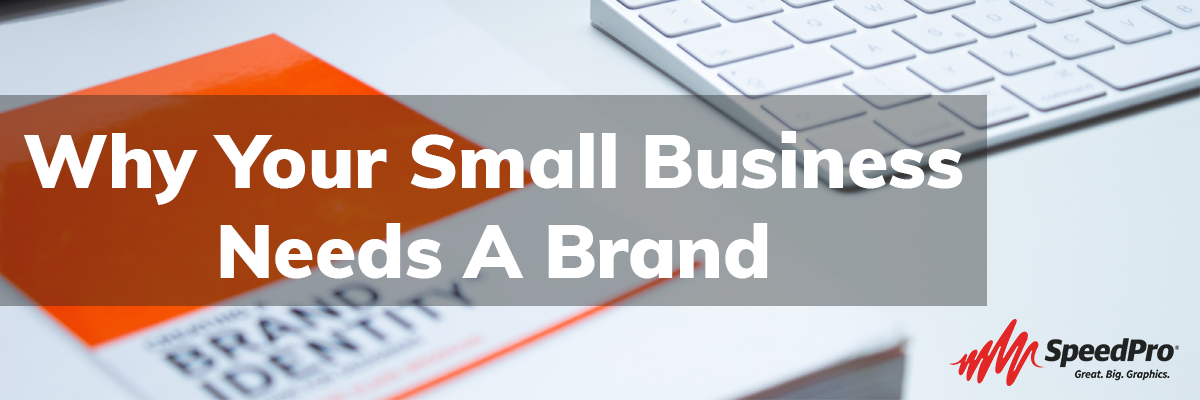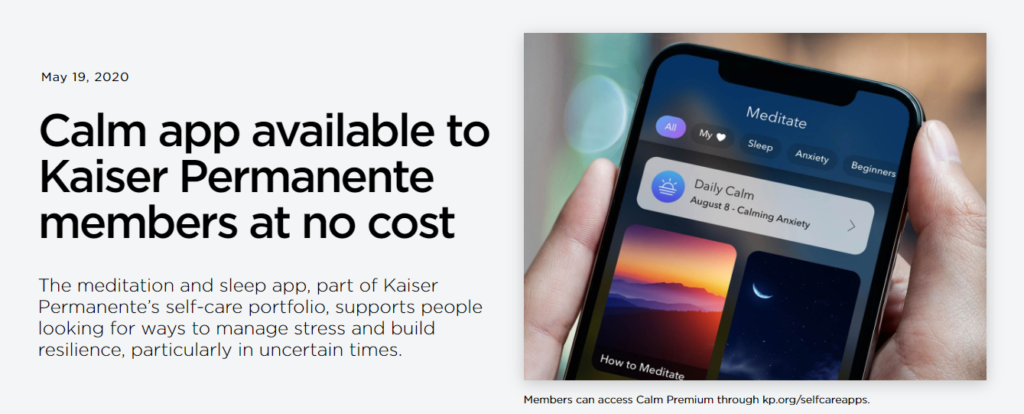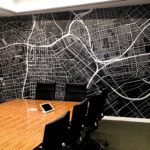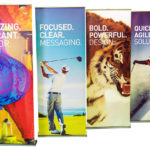
Why Your Small Business Needs a Brand
JANUARY 5, 2021| SpeedPro LA NorthCategories
UncategorizedWhat is Branding?
Most small businesses believe it is not important to have a brand. They may feel a “brand” is only reserved for large companies such as Apple, Disney, or Google. The truth is branding is important for businesses of all sizes from freelancers to Fortune 500 companies. But what is a brand? Most people believe a brand is a logo or a company name. While these are important assets for a business’s branding, it is not all a brand is. Wikipedia defines a “brand” as a “name, term, design, symbol or any other feature that identifies one seller’s good or service as distinct from those of other sellers.” Here, we will define a “brand” as the feeling a consumer gets when they think of a certain company or product.
Business owners can control some aspects of a consumer’s perception of their business (logos, colors, fonts, etc.). Sometimes they cannot (reactions to advertising). Brands are not just part of what makes your business, it should represent what your business is entirely. If your business caters to children, your branding will most likely use simple language and bright colors. Likewise, if your business is a funeral home, your messaging will be sympathetic and sincere, not snarky or witty. It may seem tricky to establish your small business’s brand, so we have outlined some steps to help you out!
Beginning to Create Your Brand Identity

One way to begin creating your brand identity is to think of what your business is. What types of goods or services does your business offer? Why did you start this business? What are your core values? It is helpful to also draft a Mission Statement as well as a Vision Statement if you do not already have them.
Let us say we are a local stationery shop and are drafting these statements. Our Mission Statement defines who we are now: Our mission is to be a knowledgeable and friendly source for all your stationery needs. Vision Statements define where you want to be: Our Vision is to become the most accessible stationery supplier on the west
coast. If you get stuck writing the Mission Statement, think of why you started your business. Writing down your company’s goals can help with writing the Vision Statement.
Creating a Mood Board is also a helpful way to visualize what your company is. A Mood Board is a collage of inspiration. Mood Boards can be either physical or digital and usually include photos, quotes, and colors. Having a visual tool is helpful in figuring out the type of business that you currently have and where the potential lies as well. For your business’s Mood Board, include drawings of possible logos, colors, fonts, and iconography you would like to use for your business. These concepts are all part of your overall brand identity and will be explained in detail ahead! Before we get to the fun stuff, let us talk about who you are targeting with your business.
Target Market
Your Target Market is the group of people you are focusing on selling your product or service to. Understanding your Target Market should be one of the first steps of starting a business, but not every business owner does this. If you do not have an established Target Market, do not worry, we can figure that out! Here are some things to think about regarding your Target Market:
- What products/services do you offer?
- Who would typically purchase that?
- What is their age?
- What is their gender?
- Where do they live?
- What are their hobbies?
- What type of income do they make?
There are more questions that you could ask yourself of your Target Market, but these are some of the more common ones. Knowing who you are selling to is important so you know how to tailor your branding.
There are other ways to find your Target Market such as using a “look alike” audience. Look at your current customers if you have a business. Is there a pattern? Let’s use the stationery shop as an example. Looking at our past customers, we notice most are women between the ages of 25-55 and live local to the shop. Now, the shop can target the type of customer they appeal to.
You may be starting your business and not have a defined customer base yet. In this case, look at the type of customers that shop at similar businesses. Use this customer base as a starting point for your targeting efforts. Once you start getting a good number of customers, use them as your look alike. Next, we will discuss why these customers should shop with us over our competitors!
Differentiation
Chances are that whatever business you start, there will be another similar to it. These other businesses will not be identical, however. No matter how similar, each business has something the others do not. Differentiation is what sets you apart from others. Some businesses might have a delivery service their competitors may not. Other businesses may sell homemade items while their competitors mass produce. The big question here is “Why should I buy from you?”.
Once again, your current customer base is your best bet. Look through reviews of your business and see what your customers have said. They may mention why they picked your business over others. If they are not that specific, look for what they liked about your business instead. It is also good to research your competitors and see what you are doing that they are not. You can also think of what they might be doing that you do not want to do. One thing that is always unique to a business is their origin story.
Think of why you started the business and the process behind it. You can leverage this story to gain a customer base. Our stationery store was started by an avid calligrapher and her sister. The store is also the first of its kind in that city. People tend to do business with companies they can relate to or find a connection with. This type of origin story sets the stationery store apart from other suppliers such as corporate office supply retailers. Office supply stores tend to be large chains and not as personable as a small business, which makes the shop more appealing from the start. Now that we know who our target market is and how we appeal to them, we are going to figure out how to talk to them.
Tone of Voice
It is important to communicate efficiently and effectively with your Target Market. This means you need to have the right Tone of Voice for your company. Your company’s Tone of Voice is the way your business speaks to your Target Market. It’s a bit different from language, which is what your business says versus how it’s said. Your Tone of Voice will come through in both verbal and written situations. Whether you write a social media caption or answer a customer call, your Tone of Voice must be consistent across the board.
We have established that our stationery shop’s Target Market is local women between 25-55 years old. We have also established that our shop is a small family-run business. The Tone of Voice our stationery shop would take is friendly, casual, and knowledgeable. A few things will be communicated to our customers by using this Tone of Voice. By being friendly and casual, we are showing that we are approachable and kind. We speak to our customers as if they are our friends and not just a sale and they will feel better about patronizing our business.
By being knowledgeable, our customers will see that we know our products. Stationery is a niche market and there are not many people that are experts in fountain pens and paper types, but we are and our customers will know that. Now that we have the foundations down, it is time for the fun stuff!
Colors
Colors are not only a fun visual aspect of your brand; they are essential in your customer’s feelings towards your business. When you think of companies like McDonald’s, Yahoo!, and Starbucks, it’s easy to recall their business’s color scheme. By implementing specific colors across all their business assets, companies ensure that when you see these colors you know that this is their brand. If you see a rideshare vehicle with a pink sticker on their window, it’s safe to say that they are using Lyft.
These companies did not choose these colors simply because they look nice. Colors have a certain effect on people that many of us are not even aware of. By using certain colors, you can influence what your customers feel. While these feelings may vary from person to person, here are some generalities regarding the psychology of colors.

These colors will not only be present in your logo, which is what most people think of regarding colors, but in everything related to your business. From packaging to stationery, to even your business space, colors influence the way that your customers will feel. Now that you have an idea of what types of feelings or associations are triggered by colors, let us look at some examples. Red is the most-used color in the restaurant industry because it sub-consciously makes people hungry. The color blue is used by a large number of airlines, banks, and technology companies. This is because blue invokes a feeling of security and trust, both things you want when doing business in these industries.
While picking out colors for your brand may seem a little overwhelming, think back to the type of company that you are and who you are serving. Write down some words you want your customers to associate with your brand and then cross-reference with the table above. If more than one color fits your word associations, do not worry! You can incorporate multiple colors or choose the ones you like more! Now that we have our colors down, let us talk typeface!
Typefaces and Fonts
 Before we start talking about typefaces and how they affect your branding, let us talk about what they are not. Typefaces are not fonts. While we may use the words interchangeably, there is a difference in how they are used. A typeface is a family of fonts. For example, Times New Roman, Arial, and Comic Sans are all typefaces. A font is more specific and includes the weight, size, and style. Times New Roman Bold Italic 16 pt. is a font. We will use both typefaces and fonts in our branding, but it is best to differentiate them early on. These typefaces and fonts will be used everywhere that your business exists.
Before we start talking about typefaces and how they affect your branding, let us talk about what they are not. Typefaces are not fonts. While we may use the words interchangeably, there is a difference in how they are used. A typeface is a family of fonts. For example, Times New Roman, Arial, and Comic Sans are all typefaces. A font is more specific and includes the weight, size, and style. Times New Roman Bold Italic 16 pt. is a font. We will use both typefaces and fonts in our branding, but it is best to differentiate them early on. These typefaces and fonts will be used everywhere that your business exists.
Let us use the stationery store, for example. You just created a website and have specific fonts for Heading 1, Heading 2, and Paragraph. These fonts will be consistent all across your site. You are also using the same fonts in the store’s Point-of-Purchase signage and your promotional flyers. Your customers will see these fonts and have no doubt that it is your business and not a competitor. This helps businesses stand out in saturated markets.
When it comes to typefaces, there are two main types: Serif and Sans Serif. Serif typefaces include typefaces such as Times New Roman, Bookman Old Style, and Garamond. These typefaces have a serif, which is the “little feet” at the bottom of the letters. Sans Serif typefaces do not have these little feet and include typefaces such as Arial, Calibri, and Century Gothic. If you look at the typeface from this article, you will notice we used a sans serif typeface.
The typeface and font we use will depend on the type of business we have. Companies that want to have traditional and reliable branding should opt for classic typefaces such as Times New Roman. Restaurants with trendy food could benefit from using stylish typefaces such as Showcard Gothic. Experiment with the various typefaces and once you see one that “feels right”, choose that! It is also okay to have a few different typefaces, but do not have too many mixed styles. And with that, we now have what we need to tackle our next topic…the logo!

Logo
Creating a logo for your company is not only a fun task, but an important one as well. All companies have logos, and with good reason. This is a symbol of everything your company is, and while it may sound overwhelming, each step will be broken down for you. First, let’s think about why we would need a logo. What does it do for us any way? Logos allow your customers to understand what type of business you are right from the start and will be seen everywhere from your business cards to your building’s lobby.
Once again, the best thing to do here is to look at who we are as a business and how we want our customers to perceive us. Take a look at the list of word associations from when we chose our colors. This will help us figure out our design style. If we have a natural and organic business, we’d have a rustic and hand-drawn design style. However, our design style would look sleek and minimalistic if we ran a high-end day spa.
Now, we need to figure out the type of logo we want. Logos can be initials, symbols, words, or any combination of these. Many fashion designers opt for their initials to become their logo. Think of companies such as Louis Vuitton, Michael Kors, and Tori Burch. They all use their initials as their logo. Automotive companies, on the other hand, tend to use symbols as their logos. These logos are very recognizable and do not require the company’s actual name next to it. Other examples of companies with symbols as their logos include Apple and Target.
Word-based logos tend to be the most common since it is easy to know who the company is. Companies using these types of logos include Visa, Microsoft, and Sony. Even if you are just using words, you can get crafty with their appearance by incorporating color and typefaces. There are also companies that combine these types of logos into one. Stitch Fix, Unilever, and Dunkin’ Donuts are great examples of this! You may need to create different versions of your logo. Think of the many applications logos have like social media profile photos, letterhead, and website headers. We suggest you have the following:
- Original full color logo
- Alternate logo. If your original logo is your initials, consider using the full name as an alternate, and vice versa.
- Single color logo if your original logo has multiple colors.
Iconography
![]()
Icons are important since they communicate a message quickly with only a symbol. Icons are most commonly seen in the tech space much like the icons on your phone that indicate which app is which. Having your own branded icons helps your customer understand that the product belongs to you. For instance, if a person has 4 different text-messaging applications on their phone and they all have the same icon, it would be impossible to tell them apart. However, it’s easy to tell Facebook Messenger apart from your phone’s native texting app as well as WhatsApp. This is because each company, whether it be Facebook, Apple, or Google has their own icon library that is custom to them. The icons within those apps are also unique! Let us use an example.
Our stationery store has decided to open an online store for those who are not local to the shop. It was decided that the icons were going to look hand-drawn. This would be an on-brand decision for them since their entire brand revolves around things being handwritten. These icons would differ vastly from the icons on a big-box office supply store’s app. Remember, every action we take we want to make sure is in line with our brand identity. It is equally important that the message our icons are trying to communicate comes through clearly. While icons are important in the tech space, this is not the only place they can exist. Iconography can be found in a variety of print materials and infographics. When presenting information to clients, infographics can make the data easier to understand. Next, we will cover a different type of visual communication, photographs!
Photography

You will hardly ever find a business that does not have some sort of photography present in their business. Whether it is on their website, office lobby, or social media, a company’s photography can communicate a variety of topics. For instance, our stationery shop’s photography can communicate what our store looks like, the type of products we offer, and who is behind the counter when you check out. Photos provide a window into what our business are like, and will always appeal to customers. Think about the last time you purchased an item online and looked at the reviews. You most likely looked at the reviews that also had photos attached, because while the written reviews are helpful, we want to see what the product actually looks like once purchased.
Much like everything else on our list, photographs also need to be in-line with our brand identity. A boutique party supply store would probably not have dark and moody photographs, but rather bright and cheery ones. A local street-food inspired restaurant would probably have photographs showing their customers enjoying their various entrees. The restaurant probably would not have photographs of the food plated like a Michelin-star restaurant. These photos would not fit in with their street-food culture.
The great part about photography is that unless you need photos for large format printing, you could use your phone to take these photos and not have to hire a professional photographer. If there are plans to do large-format printing, a professional is recommended so you get the highest quality photos that will not look pixelated when blown up. We have covered a variety of branding assets such as logos, colors, and photos. Now we will discuss where they will go.
Website
It is crucial for companies in this day and age to have a fully functioning website. Customers will be less likely to do business with a company that does not have a website. Not having a site gives customers the feeling that maybe they are not a legitimate company or that they may be outdated. In any case, having a website will provide customers with information regarding your company that could assist them in doing business with you. Information you will want to include on your website includes the following:
- Business Name
- Address or Locations list
- Products & Services
- Company History/About Us
- Contact Information/Contact Us
- Portfolio/Past Projects
- Testimonials/Reviews
Once you have all your important information figured out, you will want to start thinking of your website’s design, and this is where our branding comes in. The colors, fonts, and logos we chose early on in our branding efforts will play a big role in our site design. These assets will appear through-out our site and will let our customer know they are on the right site. Your website is going to be the perfect place to use your photographs and iconography as well! Remember to use that Tone of Voice in all the copy for the site as well. We want to make sure we maintain consistency with each part of our branding. Since we also covered Differentiation, your website is the perfect place to explain why your business is different from the others in your industry. Tell your customers why they should do business with you!
Websites are a must-have tool when it comes to doing business, but there is another tool that has become equally if not more popular. That tool is social media and in our next section, we will go over what it is and how you can use your branding to create a great experience for your followers.
Social Media
According to Statista, 79% of the US population has an active social media profile which approximately equals 247 million social media users! If your company does not have a social media presence, it is missing out on capturing that audience. While social media has been around for many years, a lot of business owners still do not understand how it works or why they need it. Most social media centers around one concept: the creation of content and building a following of people interested in that content. So why do business owners need it? Having a social media account can help business owners develop relationships and establish an authority in their field. Business owners can share what goes on in their business, promotions, and helpful tips with their followers and engage with them through comments, direct messages, and photo tags.

Sometimes business owners end up creating a profile on every social media platform, but that is not the best strategy. We suggest picking 1 to 2 platforms that fit your business model and excel in them. Each platform serves a purpose and this is where doing the research comes in handy. Find out what each platform does, who uses that platform and how it can help your business. Once you have figured out which platforms you want to use, you then come up with a strategy on how you will use the platform to get more customers. Again, your branding is important and it can definitely be implemented in these social spaces.
The photos you take for social media should be as we described before, in line with your branding. If you create social media graphics such as infographics, your colors, fonts, and iconography will be key for creating consistency in your posts. Use your Tone of Voice in your captions, and while we do want to use fonts in our photos, avoid using custom fonts on the actual captions as well as excessive emojis. You want your captions to be easy to read. Here is a bit of advice regarding photos on social media. Be sure to always include alt text with these photos, especially those with important text.
Alt Text is a description of what is in the photo. Most social media platforms have an area designated for these descriptions. Remember, you may have visitors with impaired vision who still want to engage with your content. A lot of companies have gotten in the habit of posting important information on photos with text and the actual captions tend to say “A message from XYZ company”. This does not tell our visitors with impaired vision what is going on in the photo’s message. If you type what is in the photo in the alt text, our visitors will be able to hear what is being said using an audio aid. Remember: always be inclusive.
Partnerships

Partnerships can be a valuable part of your branding and marketing efforts, but who you partner with has to make sense. By entering into a partnership, partner brands (usually 2) help each other increase brand awareness, gain a new audience, or add new products and services to their current offerings. While it may sound like a great idea, and it is, make sure that your partner themselves fall in line with your brand. Recently, outdoor clothing retailer The North Face partnered with Gucci to create a stylish outdoor clothing line.
To many of The North Face’s core customers, this collaboration makes no sense and is actually the opposite of what their brand is. The North Face has centered itself around the outdoors and getting in touch with nature. Gucci is a luxury designer that has little to nothing to do with nature and the outdoors and is more about status. While this collaboration may end up being a great endeavor, you never want your core customer base to think your collaborations do not make sense.
Here’s another partnership example. Healthcare provider, Kaiser Permanente partnered with mindfulness app Calm to provide the app for free to their members. This partnership makes perfect sense and here is why. Kaiser Permanente is known as a high-quality health provider and is focused on the prevention of health issues as well as the treatment of current issues. By providing a mindfulness and meditation app, they are ensuring that their members are not only physically healthy, but mentally and emotionally as well. This helps Calm out because now they are being seen by customers as an app that is being endorsed by medical professionals. This is the type of partnership you want.
Think about your company and what you do. What companies are out there that could complement your business and vice versa? If we use our stationery store as an example, some great partners for them could include a local coffee shop where they could sell each other’s products, a Youtuber who teaches handwriting, and even a notebook maker that could create an exclusive item for them. Your partnerships are entirely dependent on what your business stands for, so take a minute to really think that through before choosing to enter a partnership. Make it make sense.
Branding Guide
Think of everything we have covered. Your company’s branding is essentially a rulebook on how the company should be presented to the public. And what good is a rulebook if no one follows it? While you as a business owner may know all of your branding rules and assets like the back of your hand, does everyone else in your company? A branding guide takes all your branding and puts it in one central spot. You could get fancy and have a glossy hardcopy to show off, and you could also have a digital version to share with your employees and partners.
By keeping a branding guide, you ensure that everyone that is involved in marketing your business to the public will follow the exact rules that have been established regarding your branding. Everyone will use the same colors, logos, fonts, and Tone of Voice. You may have different people in charge of running your website, social media, and traditional marketing, but if everyone adheres to the branding guide, your message will be consistent. Your customers will not be confused and wonder why your marketing material is all over the place.

Branding and Your Small Business
We’ve covered all the topics you need to create a brand for your small business, and now all that’s left is to bring that vision to life! Branding does take time, there is no denying that, but it is an investment that will be worth your time. Remember: Branding is NOT just for big companies. Your small business is worthy of having a brand! Your customers will know who you are, and you will not be mistaken for any of your competitors. When you have your branding all set up, think of how to get that branding to your customers.
SpeedPro LA North can help you get exposure for your branding with our wide selection of large format signage! You can have a beautiful acrylic sign with your company’s logo on your building, or have your colors, fonts, and photos on banners promoting your latest sale! The possibilities are endless with SpeedPro LA North! If you are not sure what type of medium you would like to see your branding on, give us a call at (818) 243-1872 and we can help!









